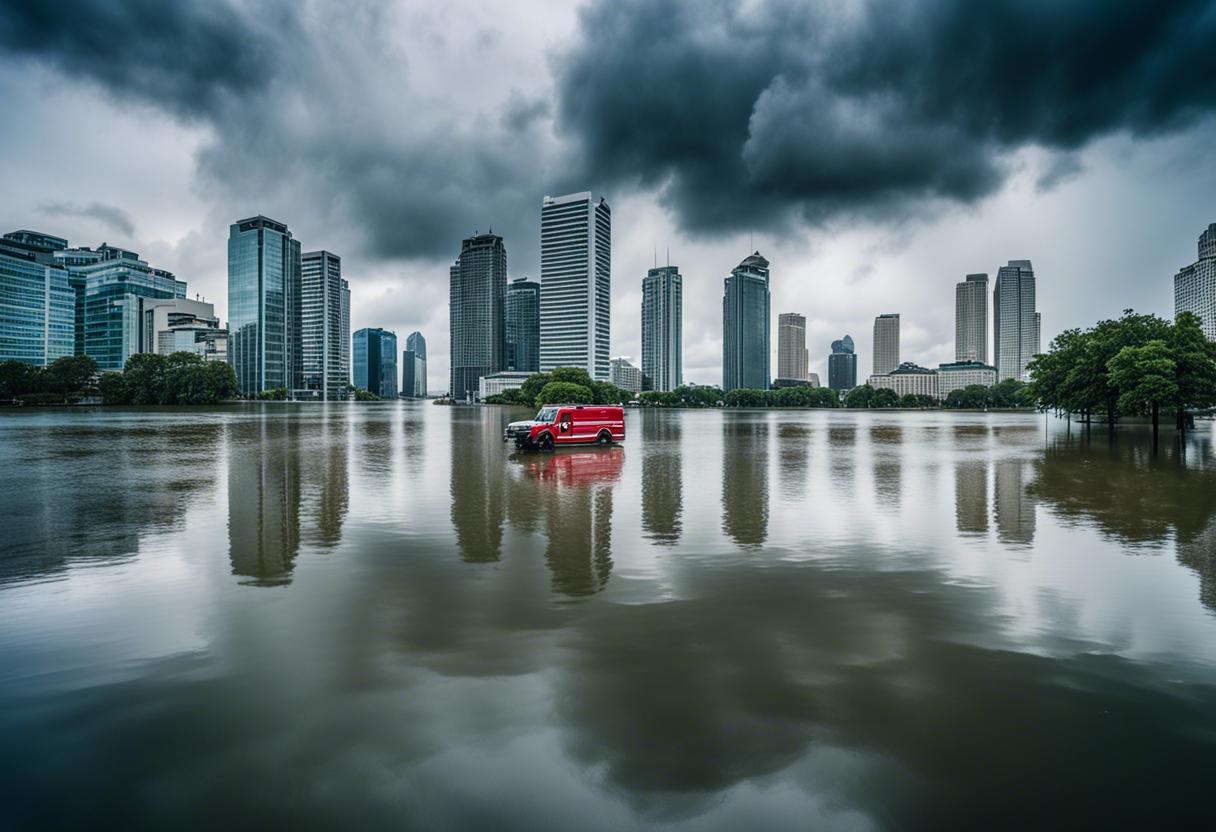Over 100,000 people have been forced to leave their homes in Russia and Kazakhstan due to severe flooding, the worst in seven decades, resulting from rapidly melting snow causing powerful rivers to overflow. A multitude of communities in the Ural Mountains, Siberia, and parts of Kazakhstan near rivers like the Ural and Tobol have been inundated. Officials report these rivers’ water levels have soared to record heights within a few hours.
When the Ural River, Europe’s third-lengthiest, breached a dam and flooded the city of Orsk located south of the Ural Mountains. Subsequently, the water levels in the downstream city of Orenburg, home to around half a million people, began closing in on the danger level of 9.3m, triggering flood warnings. The current water level is 9.14m.
The city of Kurgan, on the Tobol river, issued urgent evacuation orders. A state of emergency was enforced in the prime oil-producing region of western Siberia, Tyumen, known for being the largest hydrocarbon basin worldwide. Kremlin spokesperson Dmitry Peskov cautioned that the challenging times for Kurgan and Tyumen are far from over, with a lot more water expected to arrive.
Russian leader Vladimir Putin discussed the situation with his Kazakh counterpart Kassym-Jomart Tokayev, who mentioned that the country hadn’t experienced such disastrous flooding in the past 80 years and had to evacuate over 86,000 residents. The regions most adversely affected are Atyrau, Aktobe, Akmola, Kostanai, eastern and northern Kazakhstan, and Pavlodar, most of which border Russia and have rivers originating from Russia, like the Ural and Tobol, running through them.
Local officials in Orsk, Russia, faced public outrage as citizens unusually accused them of not doing enough. Kremlin officials have noted Putin is receiving constant updates and currently does not plan to visit the disaster-stricken region, placing trust in the local authorities and emergency services to manage the situation.
In the Kurgan region, home to nearly 800,000 inhabitants, aerial imagery taken by drones revealed the extent of water inundation. Classic Russian wooden dwellings and the shimmering golden domes of Orthodox churches stood isolated amidst an extensive sea of water.
In the city of Orenburg, boasting a population in excess of half a million, the locals were navigating the flooded streets as though they were waterways. Urgent action was being taken to reinforce dams and embankments as the Ural river’s water level approached a height of 10 meters.
Despite announced evacuation requests, Russian authorities have reported that many individuals chose to disregard them. Kurgan’s governor, Vadim Shumkov, implored citizens to heed the warnings put forth.
Shumkov acknowledged the hardship of leaving personal belongings behind, “We absolutely comprehend the difficulty in abandoning your belongings to adhere to local authority directives,” he said. “We may later jointly scoff at the predictions made by hydrologists and express our gratitude to God for our collective rescue, but let us ensure we live to do so.”
In Kurgan, there was a significant surge in water levels of the Tobol river, posing a threat to an estimated 19,000 individuals residing in the vicinity.
Elsewhere in Russia, a possible rise in water was also predicted for the Ishim river in Siberia, a feeder of the Irtysh, which in conjunction with the Ob river, constitutes the world’s seventh-longest river system.
The cause behind this year’s unusually severe floods is yet ambiguous, despite snow melt being a regular phenomenon in Russia. Experts, however, suggest that the increasing prevalence of flooding is a global effect of climate change. – (Credit: Thomson Reuters 2024)

